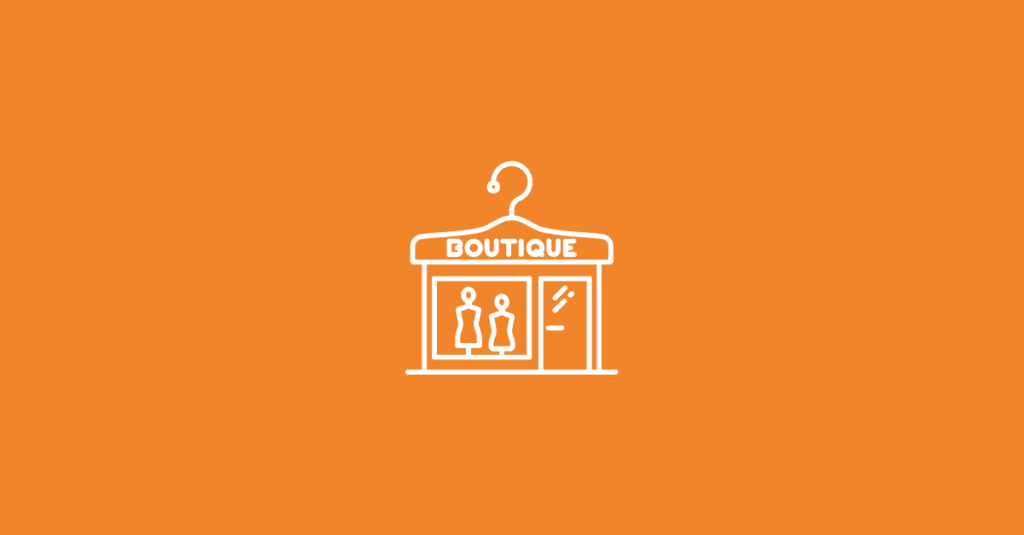If you want to start an eCommerce business this year, one of your best bets is an online boutique. Like any business, it will take resources, but it’s one of the most promising options available. This guide will walk you through how to start an online boutique from start to finish.
Why Should You Start an Online Boutique?
The B2C eCommerce industry made up 18% share of global retail sales in 2020, and it’s expected to continue growing, reaching making up almost 22% of global retail sales in 2024. A large, growing industry is appealing to entrepreneurs, but that means it’s also competitive.
In addition to e-tailers like Amazon and Wayfair, many longstanding retail companies like Walmart and Best Buy have established strong online presences. But you don’t have to go head-to-head with Amazon to build a profitable eCommerce business.
Online boutiques like The Legends League, Alivia, Ceylon, and The Lip Bar are succeeding by targeting well-defined audiences with products just for them.
How to Start an Online Boutique
The eCommerce giants like Amazon are everything for everybody. You can compete by being something special for a specific group.
Here’s how.
Step 1. Find Your Niche
First, you have to choose your target audience. You don’t have to be a member of that audience (but it helps). You just have to know the people in it well enough to know their unique needs and problems.
Step 2. Choose Your Product
Once you know who you’re targeting, it’s time to decide what you’re going to sell them. It should be something that will uniquely appeal to them. For example, Ceylon sells skincare products designed specifically for men of color. Alivia sells clothing made out of fabric prints based on artwork created by people with disabilities, and the proceeds go to non-profits in their communities.
Once you choose a product, you’ll need to decide how you’ll deliver it. Will you manufacture it yourself? Can you use a print-on-demand (POD) or dropshipping company?
There are a lot of options, but POD and dropshipping are ideal when you’re validating your idea because they don’t require an upfront investment in inventory.
Step 3. Develop Your Business Plan.
Your business plan is the map for your online boutique. It shows where you want to go and how you’re going to get there. That way, you can review your performance to see if you’re making progress. If not, you’ll need to reassess the situation. Maybe there’s a better way to get to your destination, or maybe you need to choose a new one.
Your business plan should:
- Analyze the market and any existing products or services you’ll be competing with.
- Establish how you plan to reach your target audience to acquire customers.
- Explain how you’ll handle delivering your product.
- Detail the financial investment required and what that money will be used for.
Step 4. Build Your Website
Your website is a critical part of your online boutique. We’ve developed a research-based eCommerce website checklist[1] to help you do it right, but the easiest way to get started to is use an eCommerce platform like Shopify or a Mailchimp Store.[2]
Be sure to set up analytics (Google Analytics is a free option), heatmapping and session recording (Microsoft Clarity is a free option), and website visitor identification (LeadPost charges $0.24 a lead with 100 free leads to start).
Step 5. Promote Your Product
At first, it makes sense to do things that don’t scale as you attempt to grow your online boutique. For example, you can give away free products to influencers or members of relevant communities and ask them to tell people about it.
Ultimately, you’ll want to implement marketing tactics that are scalable. Search engine optimization (SEO), email marketing, and organic social media marketing are good places to start because if you do them yourself, they cost very little.
Then you can try channels like paid social, paid search, native advertising, and display advertising when you’re generating revenue.
Step 6. Review Your Performance
Here’s where Google Analytics, Clarity, and LeadPost come into play. Take a look at your sales. If your online boutique isn’t profitable, you’ll need to see where things are going wrong.
Are you driving the wrong traffic to your website? Are people getting stuck during the checkout process? Are you bringing in the right people, but they’re not interested in your product?
Step 7. Double Down or Pivot
Based on your performance analysis, decide whether to continue on your current path or pivot. Pivoting could mean targeting a new audience with the same product or offering a different product to the same audience.
Ready to Start Your Online Boutique?
If you’re ready to start an online boutique, we’ve got more free resources to help you. Check out our guides on:
- eCommerce best practices
- eCommerce personalization
- Mailchimp for eCommerce
- eCommerce email marketing
- How to reduce your cart abandonment rate
- Catalog marketing
- Jewelery email marketing
[1] How to Create an eCommerce Website: 17 Factors of eCommerce Success
